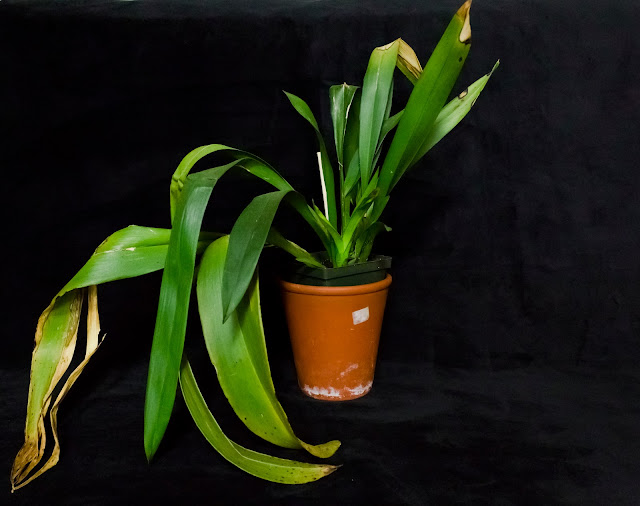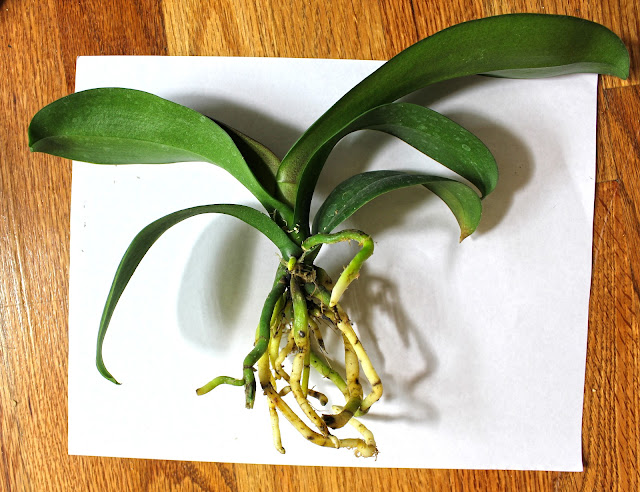Psychopsis Mendenhall 'Hildos'
In the two months since I purchased it, my Psychp Mendenhall has put in some good growth. Its pseudobulbs remain full and mostly wrinkle-free, indicating that the orchid's root system is pulling in sufficient moisture. Meanwhile, the plant's spike has doubled in height, and is now almost 2 feet tall.
This height is actually rather awkward, as the tip of the spike is almost at the level of my lighting fixture, and on more than one occasion, I have smacked it against the lights while moving the orchid for watering. It's only due to the spike's flexibility and my incredible luck that I haven't snapped it yet.
Tip of the psychopsis spike: this tip will die, and the spike will produce a side growth
At the same time, I'm a little paranoid about the health of the spike. The very tip seems to be just a little yellow and dried out? It's hard to tell, and I don't know what to expect from this orchid, since I've never flowered a psychopsis before. I really really hope that this is just indication that the spike is done growing upward and is somehow transitioning to bud development, rather than the first signs of the spike drying out.
EDIT (11/16/12): That tip did end up drying out, and the spike produced a side growth.
A thought occurred to me as I was writing this, that maybe the tip of the spike was suffering from sunburn by being so close to the T5 lamps. To be safe, I moved the orchid to the floor just next to the shelves. This leaves the spike tip a few inches lower, where the light wouldn't be quite as intense.
New root growth from psychopsis
For a more hopeful sign, the orchid seems to have some new root growth going on. My Psychp Mariposa, which whithered away and is barely hanging on now, has yet to produce any new roots. These new roots are more likely to adjust well to the current potting conditions, and support future growth.
Whatever happens to the current spike, all other signs indicate that this orchid is doing well. Yay!
























